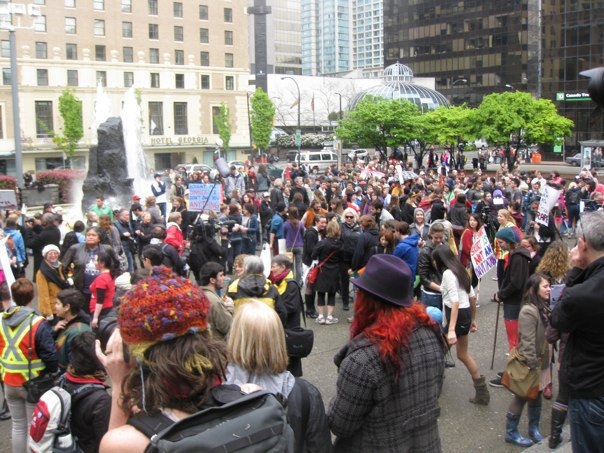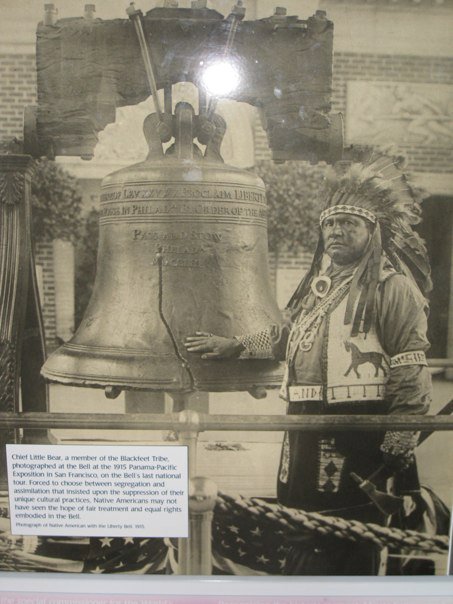Remember when Katrina hit, and the underbelly of American neglect was exposed to the world? The fact that millions of people in the richest, most prosperous country in the world were living in squalor was the subject of much consternation and concerned tongue-clucking. The fact that the vast majority of people affected (and subsequently neglected) by the disaster were from a racial group that has historically been abused and continues to be patronized or ignored by the powers that be also didn’t escape notice. We here in Canada were comfortable, perched atop our high horse, thanking the heavens above that we were simply better than that:
Conditions in one Haida Gwaii hospital are so bad that chemotherapy drugs are mixed in an outdoor wooden shed and the morgue is housed in a temporary trailer. Not only that, but the regional hospital district says water needs to cleared from the main building’s roof by hand and physiotherapy sessions need to be conducted in an old greenhouse.
The problems at the 61-year-old Queen Charlotte General Hospital and Health Centre were detailed to the NDP in a letter from the North West Regional Hospital District, sent in mid May. On Tuesday, the NDP raised the issue in the legislature, pressing the government on why it has let the facility deteriorate to such a low level.
I am not a popular entertainer, and I don’t have an internationally-televised live broadcast to exploit. All I have is this humble blog and my microcelebrity (I got Pharyngulated yesterday! Sniny!) to make this statement: Christy Clark doesn’t care about Native people. Neither does Gordon Campbell, under whose watch all of this happened, but he’s gone. For those readers outside of British Columbia, I should probably explain. Christy Clark is the current premier (akin to a governor in the United States, or a First Minister in many other parliamentary democracies) of British Columbia, having recently been elected after the resignation of the disgraced Gordon Campbell.
Health care is administrated by the provinces, meaning that the premier is responsible for ensuring the funding and oversight of health care facilities meets a provincial standard. It is up to her (or him) to ensure that resources are properly allocated, which means that the extremely sub-standard conditions of the Haida Gwaii (formerly Queen Charlote Islands) are her responsibility.
If this were an isolated incident in which political powers neglect First Nations communities, then I might be content to shrug it off. Shit happens, and sometimes things get missed. But for some reason (more on my suspicions on what that reason is later) it is always Native communities getting a shipment of body bags instead of health supplies; it’s always Native people being the subject of NIMBY protest, and because they receive taxpayer support, everyone with an internet connection thinks that they’re qualified to offer an opinion on the issue, which usually contains at least one racial slur (prefaced by “I’m not racist, but…”) and an admonishment to “get off their asses”.
I’ve spoken before about the need for effective political opposition, and this is exactly what I was talking about. Instead of running around trying to score cheap political points and play games with the debt ceiling, the provincial NDP has found an area where the government is slacking, and has brought it to the forefront. My cap is tipped to them, at least on this issue (although I am no fan of the provincial NDP generally). However, this issue is not simply relegated to the provinces:
Announcing the release of the joint work plan, INAC Minister John Duncan noted that “Canada and First Nations have an enduring historic relationship based on mutual respect, friendship and support.” However, the 2011 June Status Report of the Auditor General of Canada (AG Report) tells a different story. Chapter 4 of the report highlights the ongoing appalling conditions on First Nation reserves, the stark contrast between conditions of First Nation reserves and other communities and the federal government’s repeated failures to address adequately the deplorable conditions on First Nation reserves.
The report itself is pretty chilling, detailing the several ways in which the federal government has failed to take meaningful action on issues of basic necessities to First Nations communities across the country. Their approach is disorganized, slipshod, and shows a complete lack of commitment to actually ameliorating the problems faced by First Nations people. And therein lies the problem: it is convenient and easy to blame Native people for their lack of success, but when the support they receive from the federal government is so woefully inadequate (compared, say, to the amount that municipalities receive), one cannot simply chalk these problems up to being lazy. We’re talking about thousands of people who don’t have clean drinking water. This isn’t asking for “a handout” or special favours – this is ensuring that our citizens have what we would describe as the bare necessities to live.
So, if bringing the conditions of Haida Gwaii to provincial attention represents a successful official opposition, then the complete lack of progress and the widening disparity between Native Canadians and everyone else represents an appalling dereliction of duty on the part of the Liberal Party of Canada (with whom I am aligned) and the New Democrats. Government has a duty to look after the interests of its people, and the opposition has the responsibility to take the government to task when it fails in that duty. This failure is just as appalling as what happened in New Orleans – more so, because it’s happened over the stretch of several years.
Shawn Atleo, National Chief of the Assembly of First Nations, describes the problem in much the same words I would use:
This isn’t about assigning blame or pointing fingers – it’s about accepting responsibility and saying “my brothers and sisters need my help.” And while Mr. Atleo wasn’t at liberty to say it, I will put into words the general feeling I got from his discussion: First Nations people are treated like the ‘niggers’ of Canada, and we have work to do if we care enough to change that.
Like this article? Follow me on Twitter!








